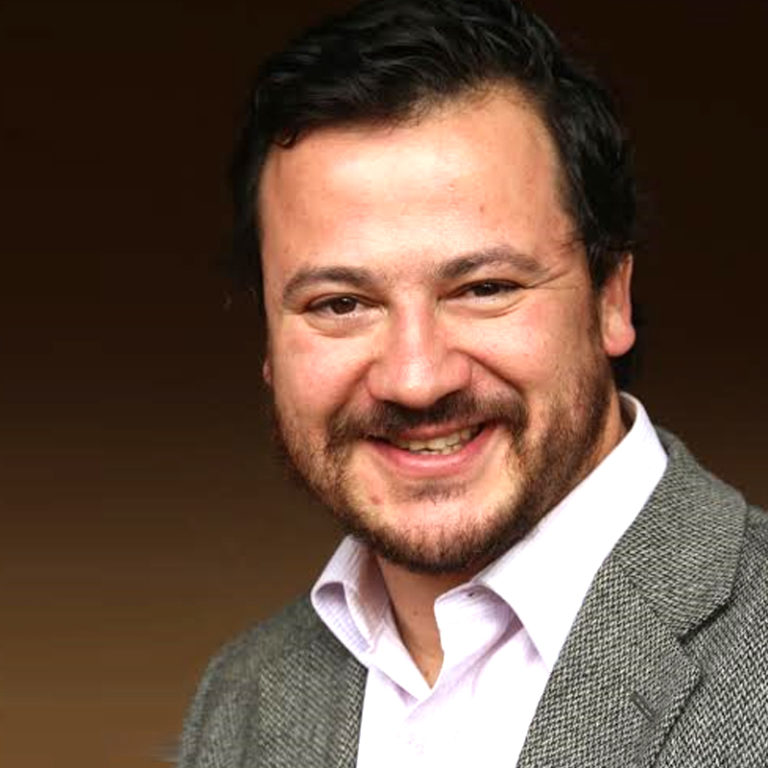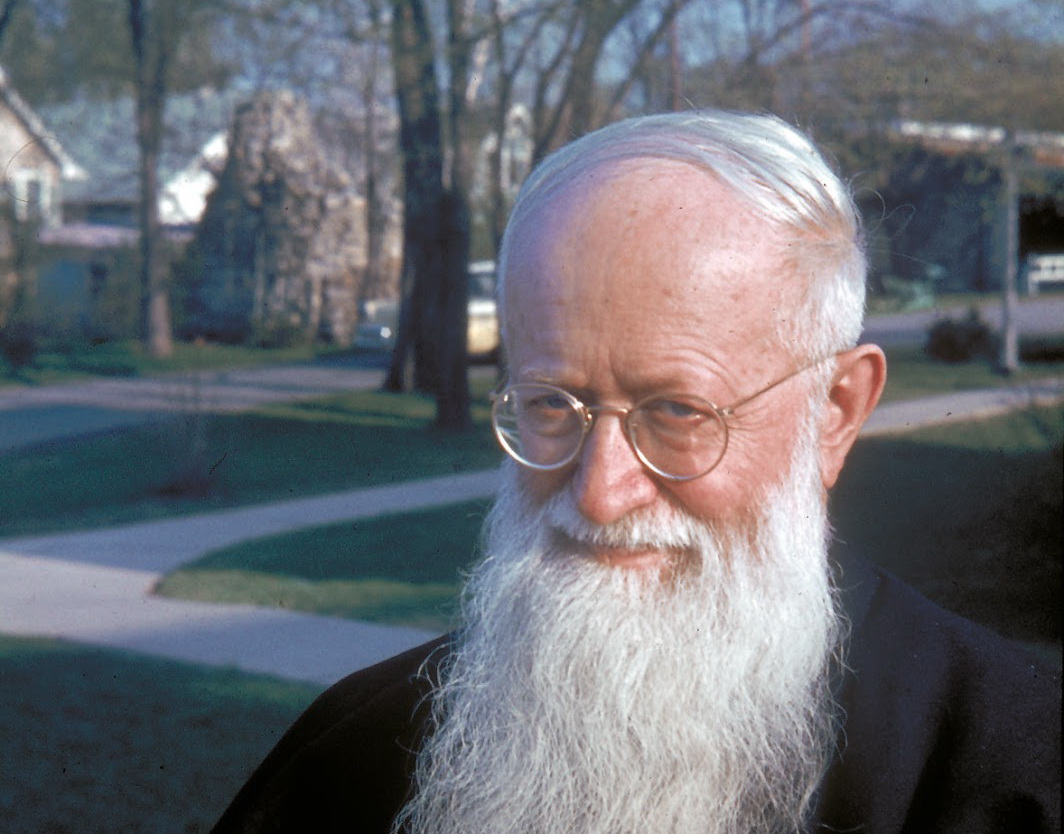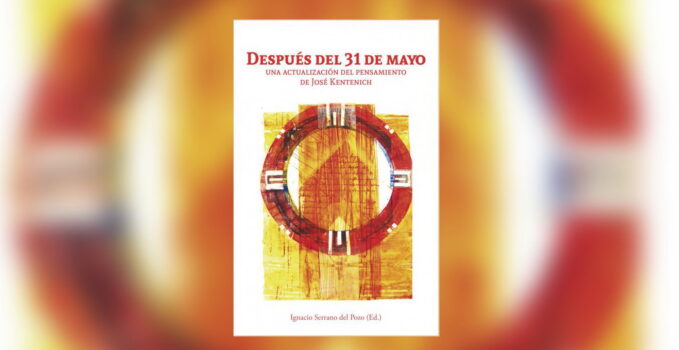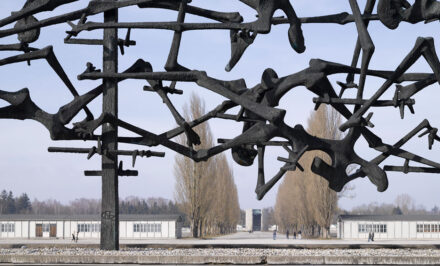An interview with Ignacio Serrano del Pozo, editor of the book “Después del 31 de mayo. Una actualización del pensamiento de José Kentenich” (After the 31st of May. An updating of Joseph Kentenich’s thinking) •
Ignacio Serrano del Pozo, Santo Tomás University, Santiago, Chile, member of the Men’s Federation, beloved and well-known author in schoenstatt.org on topics of Father Kentenich and his mission (A Child’s Three Attitudes Towards Father Kentenich, The Mission of the 31st of May as a response to the Present time, Incarnation, Communion in Multiformity, Decentralization in Unity, Synodality), he has just written a book which when you open it, you do not close it until you have read it completely and it is not “light” reading. It is a book which makes you think, it requires thinking and re-thinking, and it seeks to make understandable a key moment of Joseph Kentenich history and spirituality and his Work, Schoenstatt: the mission of the 31st of May, a task “in which the founder of Schoenstatt himself had little success, “ says the author. –
We had the good fortune of being able to interview Ignacio Serrano del Pozo about this book and its importance and challenge in the times of Pope Francis and more than 50 years after the death of Joseph Kentenich.
In October 2019, the Chilean Publishing House, Patris, published your book “After the 31st of May: an updating of Joseph Kentenich’s thinking.” Why now this book on the 31st of May?

In the first place, it is not my book. In it, I act as editor and author of an article. The book is a collection of works which wants to better understand the Mission of the 31st of May. This is an arduous task in which not even the founder of Schoenstatt had much success. He was not understood in the Church and neither in the interior of his family, except perhaps by some disciples. We are moved by the hope that after 70 years – thanks to the distance which time grants and given the new cultural and ecclesial conditions – the matter could be better understood. This text appears thus, in the context of the jubilee celebration, a favorable occasion to reflect. But, in the second place, this Work intends to shed light on the problems of our times, the question of feminism and the processes of resilience, for example, from the Kentenich categories of “organic thinking” and “mechanistic mentality.” Joseph Kentenich used those notions to bring awareness on how the bacillus of massive Bolshevism and illustrated rationalism threaten to dissolve the vitality of Christianity, converting it into a series of abstract ideas, mechanistic rites and empty structures. The question we should ask ourselves formally at the present is what are the challenges which today rest on us, which are our ”virus” we could say in light of proving if these can be a better diagnosis or surpassed from the brilliant intuitions which are present in the mission of the 31st of May.
As the years pass, do you think that the message of Joseph Kentenich gains or loses validity? Why an updating?
Surely, the subtitle of “An updating of Joseph Kentenich’s thinking” can result pretentious. Kentenich is a prophet who referred to questions which require centuries to lean towards. But the updating goes in the same line of the same petition which the Founder asked of the Schoenstatters: to re-found every 50 years so that each generation could take possession of their spiritual legacy. Another image which can contribute toward understanding this updating is that which was used by the Second Vatican Council. The message of the Gospel requires an aggiornamiento or bringing up to date – not in its contents – but in its accents, in its language or its way of approaching the world. This book also wants to constitute itself in an updating in this line. The texts on the 31st of May which exist and which have been written in past decades, I think of what Fr. Rafael Fernández has published in Spanish or of Fr. Jonathan Niehaus in English…..they are more in the line of apologetic genre proper to preaching. Even much of what the Founder of Schoenstatt wrote to explain the event of the 31st of May belongs to this homiletic style. In this circle, it is not necessary to be problematic, but rather to show the depths or impediments of a matter in which all are more or less in agreement. The works of our book have academic aim which involves analyzing and to discuss determined proposals or to examine and re-think certain theses, even if these were pronounced by the Father and Founder. In fact, the papers which form After the 31st of May could have been published in prestigious academic magazines of psychology, sociology, philosophy or theology. It seems to me that that updating in the style of transmitting the message of Schoenstatt is tremendously necessary and nothing to be looked down on.

If we had to speak in marketing terms. Do you think this academic pretention is its USP (Unique Selling Proposition)?
In January of 2019, we had a broad convocation so that different persons from different Schoenstatt communities could write about the 31st of May. The articles could be in English, Spanish or German. But this convocation demanded that those interested be in accord with academic canons. That did not mean to speak with difficulty or to refer to abstract questions, on the contrary, it meant to intent a scientific objectivity so that many, even persons outside of Schoenstatt (who have not lived from the charism, are unaware of the internal history or are unfamiliar with the language) could understand the message enveloped in the milestone of the 31st of May. After a selection by a small editorial committee, they arrived at eight Works. It may seem anecdotal, but we even questioned ourselves if we should refer to the Father and Founder as Joseph Kentenich or better as Josef Kentenich. Just like the public opinion speaks of Josef Ratzinger or Karl Marx, and nobody in a university Work with pretentions of objectivity calls them Joe or Charles, in a moment we thought only to write Joseph Kentenich, using his original written symbol. Finally, that option did not persevere, but we intentionally resisted to speak of the “Father” or the “Founder” only and we preferred to say Father Kentenich or the Founder of Schoenstatt. This demand to widen the view in order to exit that posture somewhat “esoteric” which is habitually in Schoenstatt (as in any other Charismatic Movement), is a differentiating element. Additionally, this editorial strategy was going conscientiously in the line of a “Schoenstatt reaching out.” But not only that. The same use of a broad convocation and that the book did not represent a view on only one person or the project of one individual made a differentiation possible. This Work of many has the richness of constituting itself from different focuses. Even though it may seem obvious to say it, the official interpreter for Joseph Kentenich does not exist. Undoubtedly, there have been more authoritative voices (I think of Fr. Alex Menningen or Fr. Humberto Anwandter, for example), but each person reads him from their own originality and in accord with the signs of his time and each community receives it from its own worries and ideals. That “synodality” or “walking together” is also reflected in this book. It is true that the commented Work contains an official document, the Letter from the International Presidium of the Schoenstatt Work and a lexicon of terms, the Dictionary on the 31st of May; nevertheless, these texts only pretend to give a mark in general. The tone is given by the multiplicity of written proposals with great freedom. Thus, some articles prefer to approach the more psychological aspect of the category of attachment and others refer more to the historical problem aroused in the conflict which Kentenich maintained with the hierarchy of the German Church.
The book came forth in a year of great challenges and crises, in what is ecclesial and socio-political in Chile, but not only in Chile. In which way is Father Kentenich’s thinking – expressed on a 31st of May 70 years ago – current today?
I must acknowledge that the book does not tackle – in any of its articles – the crisis in the interior of the Chilean Church nor the social explosion which began in Chile on an 18th of October. But it seems to me that that lack obeys something which the book itself wants to repair. My intuition is that the previous generations to ours – especially the Schoenstatt Fathers, the Schoenstatt Sisters and Brothers of Mary, and even some laity – have privileged a reading of Kentenich as father, psychologist and educator. Perhaps this obeys the fact that to those to whom it corresponds to transmit the Father and Founder had direct contact with him, by which that facet of “former of souls” impressed them greatly and how it awakened life in their lives. The inconvenience of this approximation (but what makes the matter very interesting) is that this has meant ignoring other aspects of Father Kentenich’s message. I think, for example, in his philosophical dimension of history, his view as a sociologist of culture, and his theology of symbols still not developed or his pastoral ministry of marriage and sex still a bit extended. This book shows that an approximation to some of those dimensions can result in a tremendously productive quarry; thus for example, in After the 31st of May, there exists a Work which approaches the historical thinking of the Father and Founder, and another phenomenon of secularization in light of dialoguing with Kentenich and with Max Weber and Friedrich Nietzsche.
What do you hope this book awakens in your readers?
I should say that I will be satisfied that they buy and read the book, today, that is plenty. With this first phase having taken place, I would love it if the book could be discussed. It seems to me that being exposed to criticism is fundamental for fresh air to enter the intellectual world of Schoenstatt. There is nothing worse than indifference. In a third phase, to call it thus, I would really like that this Work would be able to generate similar proposals. I am convinced that if we continue repeating the same usual categories, we will soon believe that Kentenich is not the answer and we will end up turning to the prophet on call. In that line, I dream of other studies which involve present problems and challenges to respond to from Schoenstatt: I think, for example, in the ecological question from organic thinking or in ecclesial synodality and the principle of decentralization from the laws of Kentenich government, to name two topics which are presented in Pope Francis’ pontificate. The same theology of grace has advanced greatly from the preconciliar era, but we have not incorporated it into our understanding of the “Capital of Grace.” Also, the “social question” and the role of the laity is a demand to be studied. What to hope for then from this book “After the 31st of May”? More than new editions, I hope it inspires other similar editorial projects.
ISBN: 978-956-246-918-0
Editorial Nueva Patris, Chile
Published: 2019
The book is so far only available in Spanish, and sold in Chile and – according the manager of Patris, Chile – in the Schoenstatt bookstores of Spain, USA, Costa Rica, Ecuador, Paraguay, Peru, and Argentina. Claim it there! Probably, it will be offered as E-Book in the course of 2020.
Original Spanish: January 24, 2020. Translation: Carlos Cantú, Austin, Texas USA/mf















